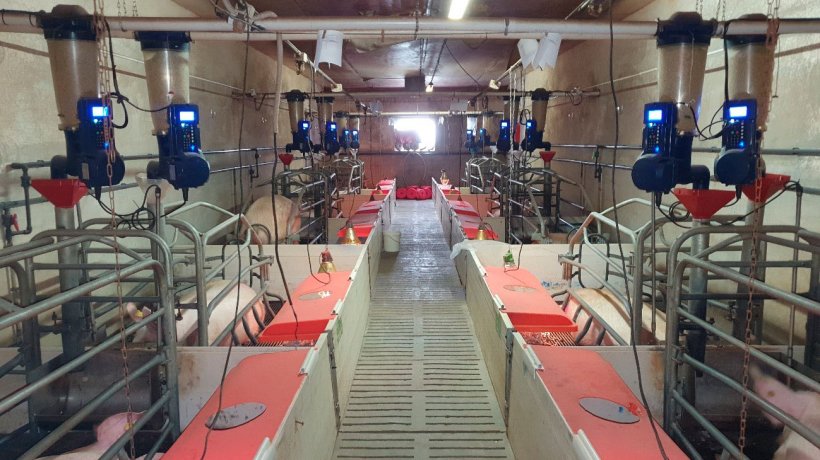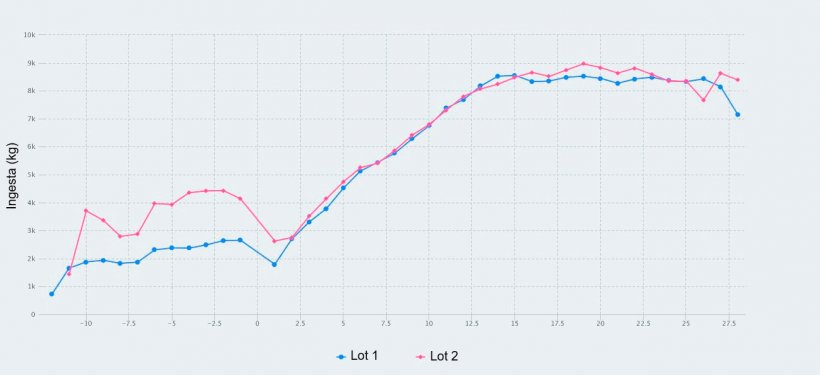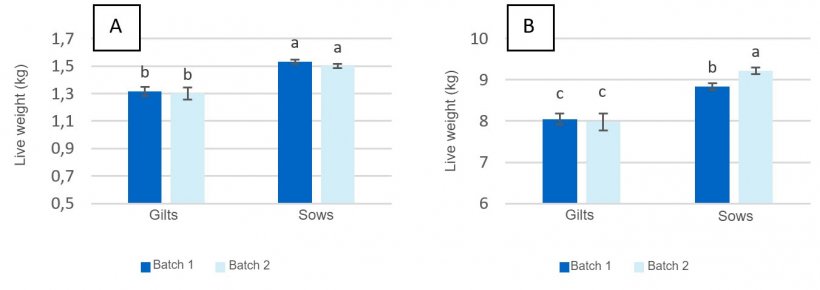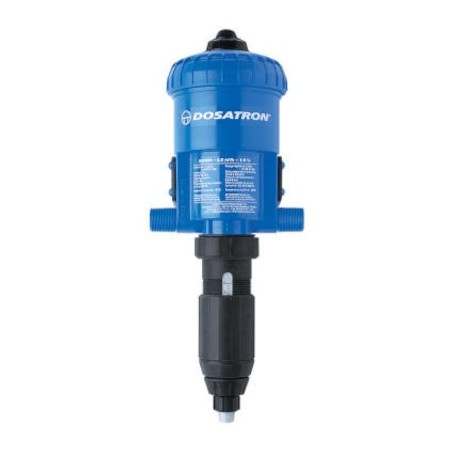In previous studies we have shown how precision feeding during lactation allows us to have a better idea of the feeding behavior of each sow, allowing us to adapt the feeding curve to each particular situation. In this way we can maximize consumption and minimize feed waste. In this sense, it seems clear that sows follow marked feeding patterns during lactation that will determine production performance in subsequent cycles (Koketsu et al, 1996).
Also, in the last month of gestation, requirements increase due to fetal and reproductive growth (growth of the placenta, uterus, and udder.) Therefore, if the feed is not adequate (both in terms of quantity and nutritional composition) the sow will mobilize body reserves (fat and protein) to maintain an adequate rate of fetal growth and reproductive tissue (Theil et al., 2011). It is also important to note that colostrum production increases during the last week of gestation (Devillers et al., 2006), and although subsequent milk production depends largely on genetic potential, feed consumption is also influential (Hartmann et al., 1997).

However, there is a certain discrepancy with regard to peripartum feeding. Some authors propose a progressive increase from the moment the sows enter the farrowing room; others favor ad libitum feeding from that same point on; but there are also those who prefer to restrict sow feeding on the days prior to farrowing.
In this regard, the use of electronic feeders (Photo 1), allows a more controlled administration of the daily amount of feed determined according to the feeding behavior of each sow. In addition, the possibility of administering the feed in a greater number of meals prevents the sow from "binge eating" and allows a more distributed consumption throughout the day.

Photo 1. Electronic feeders in farrowing installed on a commercial farm (Centro de Experimentación Porcino, Aguilafuente, Segovia) where the study was done.
Recent studies (Martí et al., 2019) have evaluated ad libitum feeding verses a gradual reduction in consumption according to the feeding pattern of each sow in the days prior to farrowing. These authors found no differences in reproductive performance (number of piglets born alive, stillborn, mummified, or weaned), although they did not evaluate the subsequent development of the litter in terms of growth.
Therefore, in the literature, although no differences in the number of piglets were detected, increasing feed supply at the end of gestation, as well as distributing the sow's feed allowance into more meals, could improve the vitality and the weight of the piglets at birth, and also their performance at weaning, due to greater mammary development.
In a recent study (unpublished data), we compared the effect of feeding sows two different amounts in the days before farrowing based on the effect on production performance. The electronic dispensers were programmed so that the sow could have the allocated amount of feed distributed in 6 daily meals. The sow herself could decide how much feed to receive at each feeding, without exceeding the maximum amount programmed. Batch 1 was offered the farm's usual amount given during this final phase of gestation, increased by 20% (total maximum of 2.80 kg/day). In batch 1, an average consumption of 2.11 kg / day was recorded. Batch 2 was given a greater ration of feed, up to a maximum of 4.20 kg/day, and an average consumption of 3.66 kg/day was recorded, which represents almost 75% greater daily intake compared to batch 1. After farrowing, both batches were given the same amount of feed, gradually increasing the feed ration to reach a maximum of 9.24 kg/day starting the 14th day of lactation.
Figure 1 shows both batch' consumption from their entry into farrowing until weaning (day 28 of lactation). It is clearly seen how the sows of both lots did indeed exhibit different consumption in the pre-farrowing period. However, these differences in consumption did not translate into differences in the weight of the live-born piglets (P>0.05), regardless of whether the females were gilts or sows (Figure 2A).

Figure 1. Feed consumption from day 107 of gestation to weaning (day 28 of lactation) of sows fed a maximum of 2.8 kg/day (Lot 1) and 4.2 kg/day (Lot 2) of feed during the days prior to farrowing.
Similarly, Figure 1 shows how, once they had farrowed, the feeding behavior of the sows in both batches is the same, with a similar progressive increase in consumption during the first two weeks of lactation. It should be noted that the batch of females that consumed more in the days prior to farrowing showed a higher feed consumption again when they reached the peak of lactation (around day 20 of lactation). This variation in consumption did result in differences in the weight of the piglets at weaning, although only for multiparous sows. Piglets from multiparous sows that had greater consumption pre-farrowing and at peak lactation had a higher weaning weight (8.87%) than those from multiparous sows whose dams consumed less feed in the days before farrowing (9.21 vs. 8.46 kg, respectively; P<0.05) (Figure 2B).

Figure 2. Live birth weight of piglets (A) and at weaning (day 28 of lactation) (B) from gilts and sows fed a maximum of 2.80 kg/day (Lot 1) and 4.20 kg/day (Lot 2) of feed during the days before farrowing.
The greater weaning weight of the piglets in Batch 2 could be due to the sows' higher feed intake in the days prior to farrowing and again at peak lactation, favoring mammary development, and therefore the milk production available for the piglets.
Despite the controversy regarding peripartum feeding, under the field conditions in which this study was conducted, we can conclude that the sows' consumption in the days prior to farrowing does not affect the individual birth weight of the piglets, although higher consumption results in heavier piglets at weaning. These systems that allow the sow to eat at her own will, but are always supervised and with reference to a standard curve for her genetics and parity, help to improve the production performance of the piglets at weaning.










